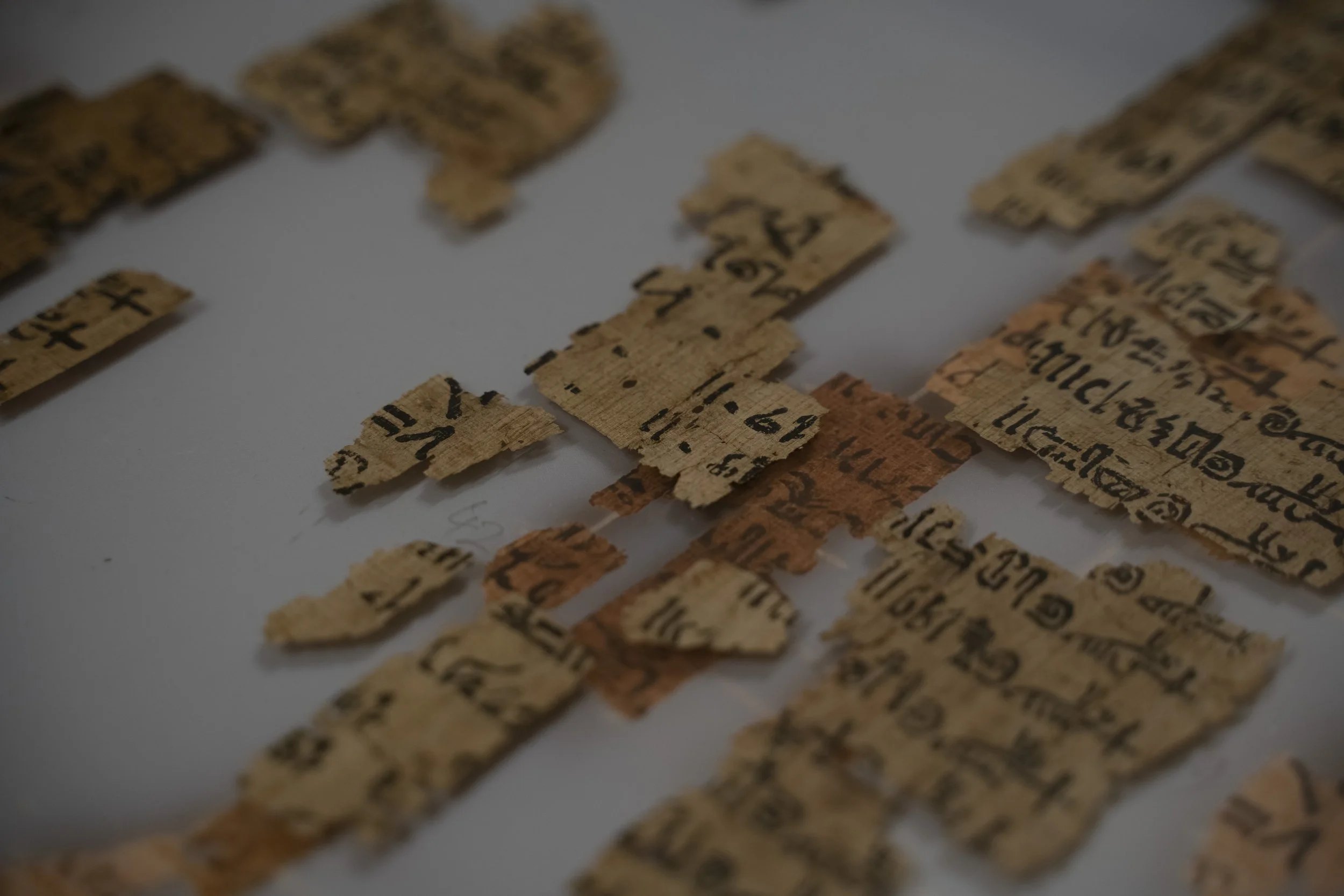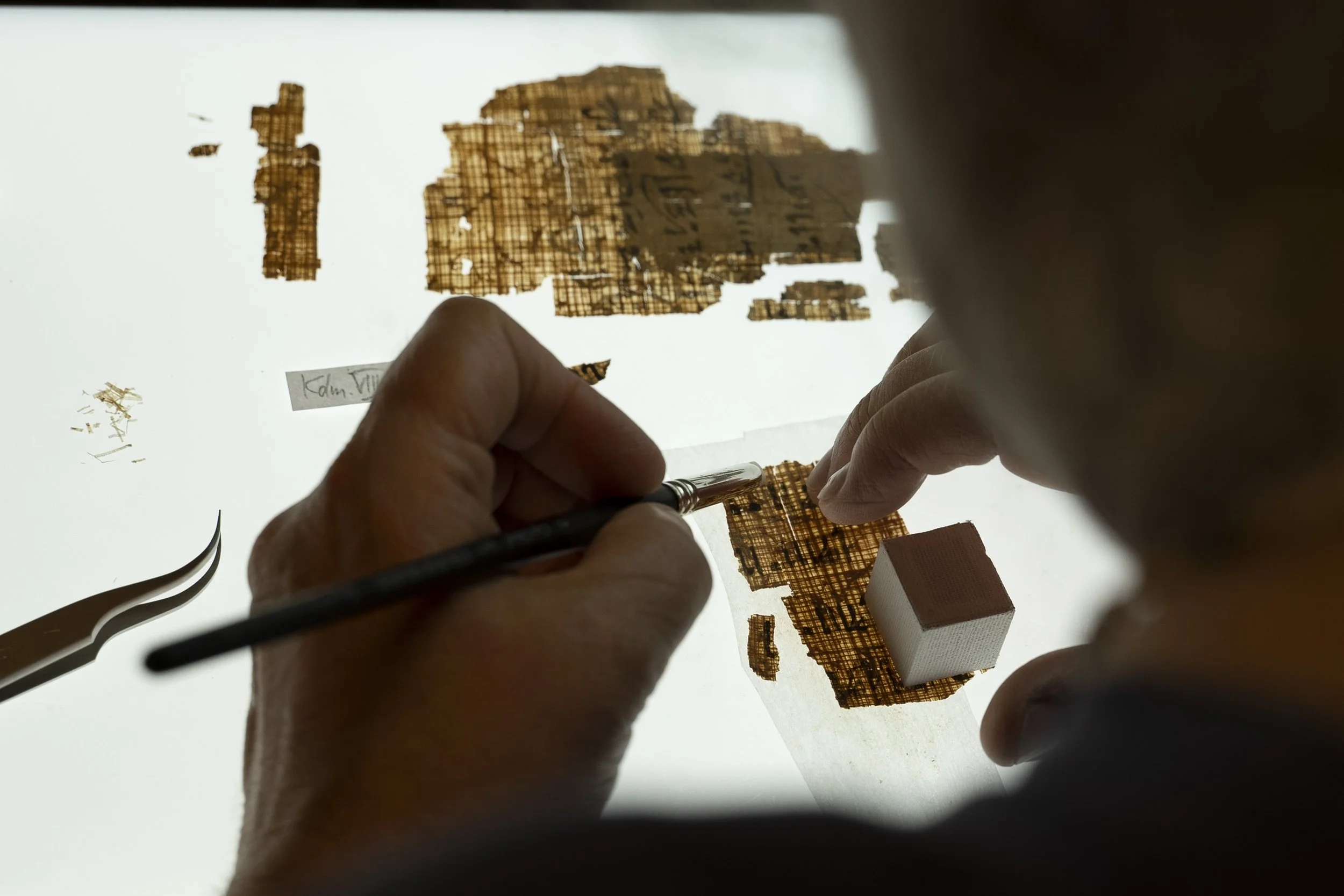The “Turin King List” restored
The manuscript, the only true list of kings apart from Manetho which includes many unknown kings, was purchased by the consul Bernardino Drovetti around 1820, and was seen and described for the first time by François Champollion in 1824.
On the backside (verso) there is a chronological list written in hieratic, the cursive form of the hieroglyphic script, preserving 11 columns of Egyptian rulers, starting from the primordial mythological period, with the divine kingdoms of Geb, Osiris, Horus, Seth, and Maat, up to the end of the Second Intermediate Period (1650 BCE). Despite its historical value for ancient Egypt, the Papyrus of Kings was written on “recycled paper”: the front (recto) of the papyrus preserves a tax register dated to the time of King Ramesses II (1279–1213 BCE).
Over the last 200 years, thanks to the efforts of numerous scholars, it has been possible to combine most of the approximately 300 fragments. The last restoration took place in 1930 by H. Ibscher (Berlin) and E. Caudana (Turin), who cleaned and repositioned the fragments with thin strips of silk. Now, nearly 100 years later, on the 200th anniversary of the deciphering of the hieroglyphs in 1822, the papyrus was completely restored in 2022 by Myriam Krutzsch (Restorer, Ägyptisches Museum und Papyrussammlung der Staattlichen Museen zu Berlin). The restoration project, supervised by Susanne Töpfer (Curator Papyrus Collection Turin), followed the new reconstruction developed by Kim Ryholt (Egyptologist, University of Copenhagen), who in recent years has devoted himself to the study of manuscript. He added numerous fragments that were not included in previous editions and rearranged many other fragments that were previously placed in the wrong positions. Some needed minor adjustments, while other fragments needed to be moved to an entirely new location.
As a result, the triad cooperation between Turin, Berlin, and Copenhagen presents the so-called “Turin King List” cleaned and rearranged, and thereby enabling new studies of the text.
The “Turin King List” is now exhibited in a room equipped with multimedia tools and infographics to reveal the story and the contents of this famous papyrus.
To learn more about the research and the restoration project that was carried out on the “Turin King List” explore the online Papyrus Collection and watch the online lecture led by Susanne Töpfer, Kim Ryholt and Myriam Krutzsch.







